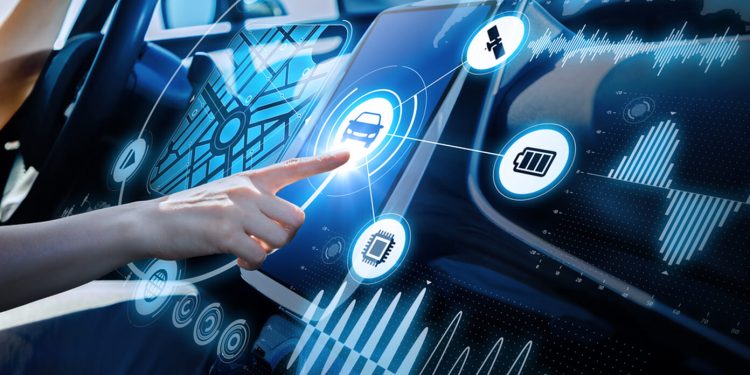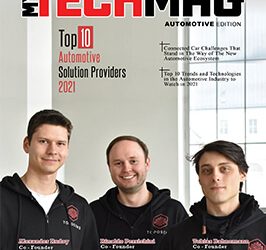Thanks to the internet, the world is connected more than ever before. In the connected world powered by the internet, automakers, and fleet operators are also embracing connectivity to give the end-users a new experience. The potential for connected vehicles is an exciting high-growth area, but there are several challenges that OEMs need to address before these next-generation cars hit the market.
Security Concerns of Connected Vehicle Technology
As connected vehicle technology evolves, vehicles will not only have in-vehicle connectivity but also have the ability to connect with external devices. While delivering significant customer value, connected cars raise safety, security, and privacy concerns.
Cybercriminals may try to gain access to critical in-vehicle data and electronic units, potentially compromising customer privacy and essential safety functions. Below are some possible ways hackers can try to penetrate connected vehicle services:
- Near Field Attacks: In these types of attacks, hackers can physically compromise a vehicle through Bluetooth, OBDII, or Wi-Fi.
- Remote Attacks: In these attacks, hackers can remotely compromise a vehicle by first attacking the automotive cloud and then attacking the cars and devices connected to it.
- Mobile attacks: In these attacks, hackers can target a mobile application and then use it to attack the automotive cloud, and through it, attack connected vehicles and devices.
The security threats facing connected cars are a grave concern that car manufacturers and security experts need to address before the industry moves towards a more autonomous future.
Achieving reliable connectivity
Connected cars are advanced implementations of the IoT, which generate a massive chunk of data for detailed insights to users. Also, high bandwidth and reliable connectivity are of paramount importance to access advanced features like autonomous driving and maintenance. Therefore, achieving reliable connectivity is a significant challenge for OEMs. Additionally, ensuring seamless wireless internet through the course of the journey is vital to allow users to enjoy the entire benefits of the connected vehicles.
Currently, 5G is the only wireless technology that can provide reliable, high-bandwidth coverage needed for cellular connectivity and seamless operations.
Gaining Customers’ trust
Customers are currently skeptical of Autonomous vehicles and Connected Vehicles as their features are still in the testing phase. Also, many consumers fear that their sensitive data could be at risk due to manufacturers’ lack of privacy controls or integration. Therefore, the manufacturers and policymakers will have this monumental task of gaining consumers’ trust before their widespread adoption happens.
A good way to ensure that is by establishing a watchdog agency to oversee privacy standards in connected cars.
Developing vehicle-to-infrastructure projects
In order for CVs and AVs to gain wider acceptance, there needs to be more investment in vehicle-to-infrastructure projects. This includes creating standards to facilitate communications between vehicles, travel applications, vehicles and roadways, construction zones, intersections, and more elements of the day-to-day driving experience.
For instance, If a fully autonomous car were to drive from an advanced infrastructure to a substandard infrastructure, it would become restricted in its autonomy and connectivity. Therefore creating vehicle-to-infrastructure projects is very important.
Currently, the U.S. Department of Transportation and the National Highway Traffic Safety Administration are jointly working on vehicle-to-infrastructure and vehicle-to-vehicle standardization. They will create the Standards that will give the local agencies the confidence to deploy connected vehicles across different regions.
Preventing miscommunication
A connected vehicle comprises three elements – the car, the application(that processes the data), and the cloud (where the information is stored and retrieved for data processing).
For seamless operations of a connected car and optimum safety, the data generated should be communicated to the cloud, then transmitted to the app for analysis and to offer the user the correct information.
All these actions must happen within fractions of seconds so drivers can get real-time information for a seamless driving experience. Any delay or miscommunication can have dire consequences for both the car and the driver.
Fulfilling Customer Expectations
No matter the brand, fulfilling customer expectations is crucial to retaining customer loyalty. As more connected features become accessible to users, they will focus more on the driving experience they get from their vehicle.
Therefore, brands must focus on enhancing customer experiences and successfully integrating the customer’s connected lifestyle through digital services. Making their in-car experience seamless and intuitive will allow end-users to interact with their cars with the same ease they use their smartphones.
Standardization
Last but not least, OEMs will need to create and enforce standard practices for connectivity, including communications, data suites, data processing, and other technology. This will ensure all the connected vehicles are equipped with the integrated technology they need for autonomy and communications.
Everything from the cameras and sensors’ operating systems to infotainment systems needs to be standardized to ensure seamless operations.
Final words
Undoubtedly, the connected cars sector is a treasure chest of possibilities. If these challenges are addressed soon, they are going to be mainstream in the near future.







